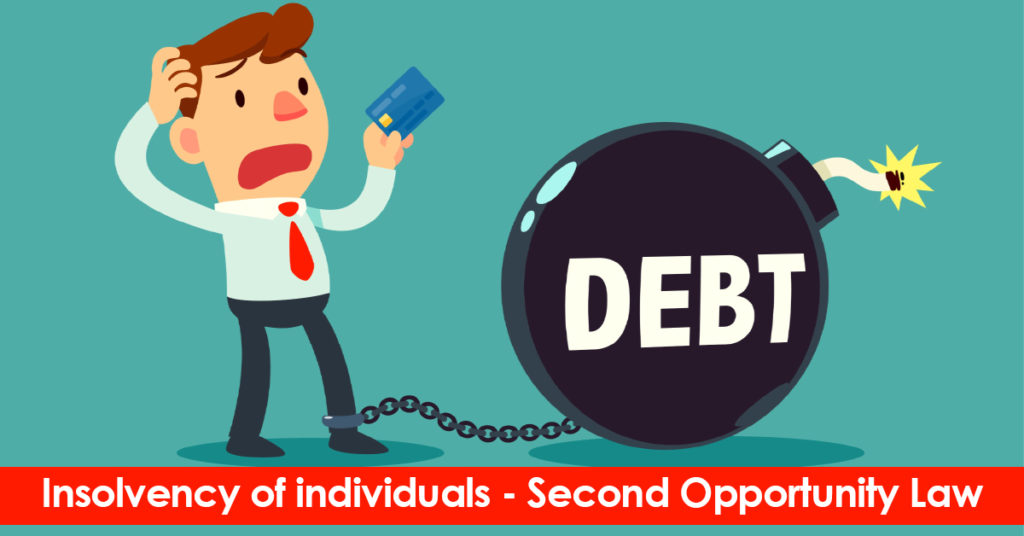IN principle under Spanish law an individual is responsible for the payment of his debts using present and future assets.
This does not apply to companies who cannot pay their debts due to insolvency but individuals may have a second chance, that allows them to cancel all their debts and start again even if they have not paid all of what they owe, thanks to the so-called second chance law (RDL Law 1/2015).
In these uncertain and economically difficult times, it is very important that this possibility is understood, as in some cases, it may be possible to cancel all debts even if they have not be paid in full. This second chance mechanism provides two procedures or phases:
1.- Extrajudicial agreements.
In order to cancel the debts, the debtor must have at least tried to reach an out-of-court agreement with their creditors, which may consist of a withdrawal from (or reduction of debts) or an extension of time (i.e. increase in the term for payment).
This agreement must be made in accordance with the formalities and requirements established by law. Although no agreement may have been reached, trying to do so is essential to allow a debtor to request the subsequent cancellation of unpaid debts. If there is no possibility of agreement, then the second phase will begin:
2.- Consecutive Insolvency Process (bankruptcy)
If the agreement is not possible, an insolvency proceeding will be initiated in the case of individuals before the court, directly opening the liquidation phase.
It is after the liquidation of the assets, when the benefit of the second opportunity can be requested, the law calls it the benefit of exoneration of the unsatisfied liability or debts.
To request this forgiveness of the rest of the debts, and be able to start again the debtor, must prove that they are a ‘good faith debtor’ and have not been convicted of crimes against property, workers’ rights, etc., and the debtor must prove that that they have at least attempted an out-of-court settlement (phase 1 above).
In addition, the debtor must have paid certain debts against the estate (i.e. bankruptcy administrator expenses), as well as privileged debts (i.e. mortgages) and at least 25 per cent of ordinary debts. Or failing that, if the debtor has not been able to pay these, they could apply for benefit of the second opportunity, by agreeing to submit to a payment plan, so that the debtor is seen to have collaborated with the judge and the bankruptcy administrator, and other requisites.
If the benefit of the second opportunity is granted, that will mean that the balance of the unpaid debts will be exonerated or forgiven. The benefit does not apply to maintenance (such as children under a certain age), nor public debt like taxes, etc.
Therefore, if you are in an insolvency situation, be aware that you can apply, if you comply with the aforementioned conditions, to the mechanism of the second opportunity.
In some cases and depending on the type of debt you have, this can allow you, before or in the bankruptcy or insolvency process, to cancel and end your debts, and start again.
If you want the advice of our law firm, contact us and we will help you.
The information provided in this article is not intended to be legal advice, it merely conveys information related to legal issues.
Carlos Baos (Lawyer)
White & Baos
Tel: +34 966 426 185
E-mail: info@white-baos.com
White & Baos 2020- All Rights Reserved.
